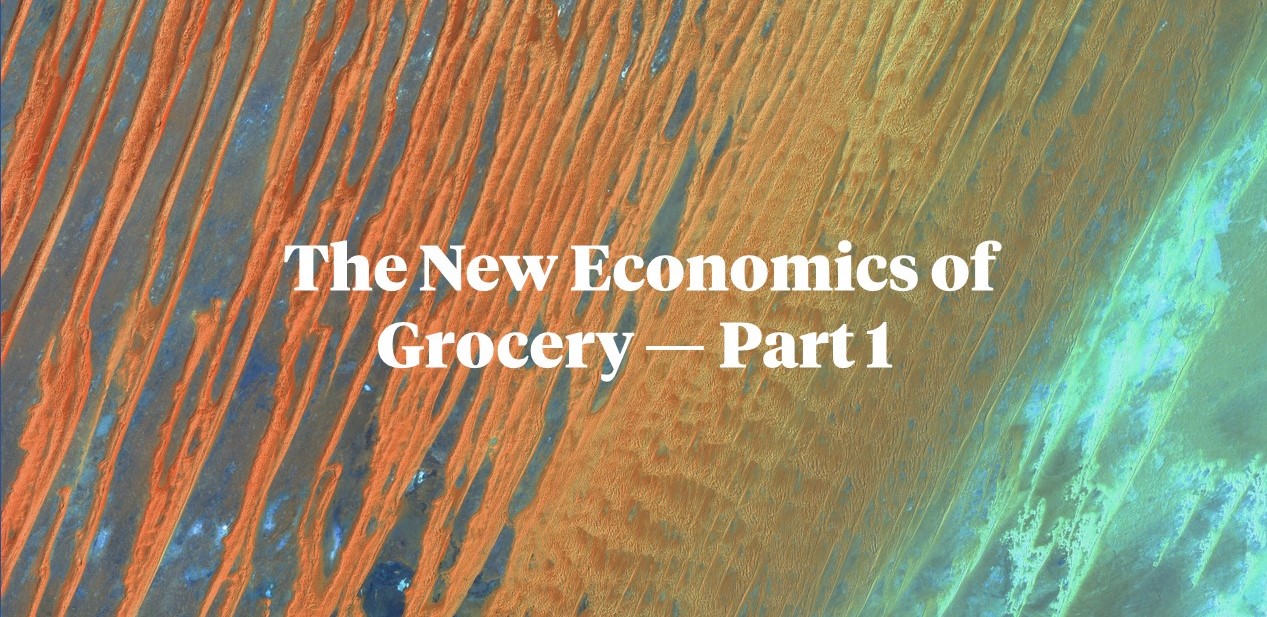
Matt Andrew, our UK managing director and partner, chatted with Ash Anzie, Senior Continuous Insights Manager, International at Kraft-Heinz, and Tom Priestman, Global Client Partnership Lead for FMCG at Facebook, to discuss the new economic challenges and opportunities in grocery.
In this first article of a three part series, we discuss the impact of the rise of e-commerce on the manufacturer/retailer relationships and on marketers, and the importance of evolving with changing consumer habits.
Ash: E-commerce is one of those channels that has to become sustainable over time. From shopper insights over the last few years, we know that if you shop online, you’re typically more loyal to that retailer. You don’t shop exclusively online — you also shop in store, you get familiar with the brand, how the categories are set up and what range is available.
There’s an inbuilt, long-term customer value for retailers who can make e-commerce work. It has to be sustainable, and everyone has to make concerted effort to ensure that it does work.
There’s merit in brands being able to help shoppers on the buying journey. Consumers don’t decide what to buy out of nowhere — there’s forethought that goes into what you’re going to have for dinner that night. There will be touchpoints on that journey where we can dial up the role of e-commerce.
E-commerce has to become profitable long term, because it’s not going away. More and more people are moving into the channel and there will be some profit that comes from critical mass much in the same way that bricks and mortar stores are profitable now because of critical mass.
Tom: I don’t think there’s a perfect, proven model for grocery specifically, but there are many models that are winning from a growth point of view. They practice data-driven approaches, they understand how consumers interact with their brands and businesses. They know where the consumers are, and they’ll reach out on their terms.
Mobile is the number one screen. It’s amazing how few major organizations have an optimal mobile experience, but it’s absolutely essential. The trends were there, they were already clear, they were already rising year on year — but suddenly those trends have been accelerating under COVID. That’s the challenge to marketers, to resolve what the economics of that look like.
With a return to the big shop, shoppers have returned to the Big Four. People are more likely to visit one store for all their items, and this change is affecting customer loyalty. Discounters and small retailers need to work out how to bring back the old shoppers. Major grocers need to find a way to keep hold of their new customers on a long-term basis.
Tom: Putting the consumer at the heart of your business and being agile to capitalize on those changing behaviors is absolutely key. The initial behaviors everyone had under lockdown are routines now in many instances. They’re not all going to be sticky, but some will be sticky.
For grocery it’s highly category-specific. Some categories almost disappeared based on the challenges they’ve had. Think of how the reduction in commuting impacted consumption moments in food and beverage for on-the-go or impulse. In other categories, we see a rise — health, wellness, cleanliness — those categories will naturally have seen a change in demand. How sticky they are will be hard to determine, but that’s our job as marketers to overcome.
At Facebook we see consumer behavior and we build products to satisfy it. At the beginning of the pandemic, messaging increased 50% under lockdown. Voice and video calling doubled, and we saw a massive spike in Facebook and Instagram lives. Since then, we focused on building solutions and tools that satisfy. We launched messenger rooms. New features for live video were announced, and that portal has access for Zoom and Go To Meeting and other meeting tools.
The strength of FMCGs is that they know the category, they know the consumer and they know their motivations. Leveraging that insight is going to be absolutely key. They’re just going to have to work out how to do it in a considerably more agile manner.
Ash: What we’ve seen has been an evolution in how consumers and shoppers have behaved. When the lockdown was first announced, shoppers went into panic mode, all driven by uncertainty. Not knowing how long we’d be stuck indoors led to a situation that we’ve probably not seen before or since in our lifetimes. People flocked to cupboard staples and really stocked up on goods. Clearly companies like Kraft-Heinz benefited, and that’s no secret.
That first phase of the lockdown is very different to the phase now, where people are starting to build or rebuild the confidence to engage with things like out of home consumption. We’re starting to go back to something approaching normal and this phase is a very uncertain one because we don’t really know how long it will take for things to return to “normal” and what the implications are from a shopper and consumer perspective.
We’ve moved into a phase now where people are really keen to get out and do more. We’ve evolved from panic mode to “OK this is now a normal situation or a new version of normal, what does that mean for me? If I’m able to spend money on the things I was able to before, how does that look? If I’m not able to spend as much money as I could have done before, I have to make some choices about what’s important.” You can’t really cut back on what you eat and drink, but you can cut back on more discretionary spending. In this phase, consumers are starting to work out “What can I do, what’s the implication, where do I choose to spend the money that I have available?”
For more insight into the new economics of grocery, request the free report, “From Pandemic to Price Wars: Winning in the new world of grocery.”
To read the second article, click here, for the third one, click here.
To hear the full podcast, subscribe to the Ekimetrics channel on your platform of choice.
For more information on Ekimetrics and how we help provide certainty through marketing science, visit ekimetrics.com.
Thought Leadership

Thought Leadership
